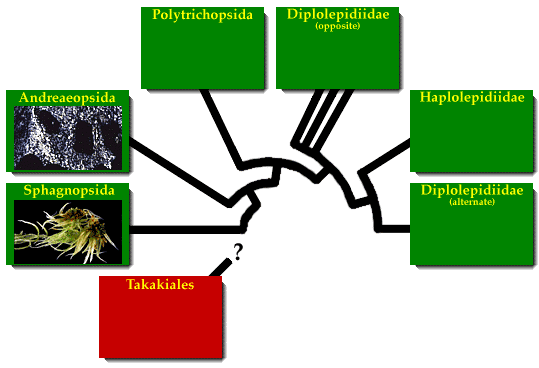
After flowering plants and ferns, mosses are the most diverse group of plants, with more than 10,000 species in 700 genera. This makes mosses almost twice as diverse as mammals.
Mosses don't receive as much attention from us as flowering plants, ferns, or conifers because most mosses are small and inconspicuous. They have no vascular tissue or wood to lend them structural support, nor do they have large leaves or showy cones or flowers. This does not mean that mosses are not important; in fact, mosses play important roles in reducing erosion along streams, water and nutrient cycling in tropical forests, and insulating the arctic permafrost.
Higher-level classification of the mosses is still not fully settled, and there is still considerable difference of opinion on the names of the major groups. The cladogram below shows the relationships of the four major groups: Sphagnopsida (peat mosses), Andreaeopsida (lantern mosses), Polytrichopsida (nematodontous mosses), and the Bryopsida (arthrodontous mosses), which includes the diplolepidious and haplolepidious groups.

We do not yet have a large exhibit on mosses, and until we do, you may wish to visit some of these other sites:
For more information about mosses, try the resources listing at the ABLS website. The American Bryological and Lichenological Society is devoted to the scientific study of all aspects of bryophyte biology.
You may also be interested in the Bryological Resources at the Missouri Botanical Garden, including a literature database, index of moss names, and bryological glossary.


